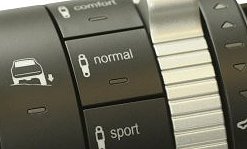Day/Night Marking
 Day/night laser marking applications can be found wherever there is a need for illuminated plastic-covered electronics. Chiefly used in the automotive and aerospace industries, the technology replaces two-part injection moulding, which costs more to manufacture and is typically less efficient, flexible and precise. Day/night marking has become the industry standard for illuminating surfaces internally.
Day/night laser marking applications can be found wherever there is a need for illuminated plastic-covered electronics. Chiefly used in the automotive and aerospace industries, the technology replaces two-part injection moulding, which costs more to manufacture and is typically less efficient, flexible and precise. Day/night marking has become the industry standard for illuminating surfaces internally.
The application of this technology can be observed in just about all modern vehicles. Dashboards that utilise day/night marking are easy to read during the day, whilst at night all instruments and controls are illuminated to provide motorists with a visible, well-lit panel that produces no glare. The illumination is sufficient to light up the dashboard but not the interior of the car, which would otherwise be dangerous.
How It Works
Day/night laser marking technology works by using a concentrated laser beam to strip away layers of coloured lacquer until the correct or desired colour is exposed, at which point the transparent surface material (invariably a plastic dial or counter) is illuminated as intended. Day/night applications, as their name suggests, provide excellent illumination during the day or night.
The technology behind day/night applications is complex, but the components can be manufactured at relatively little cost. A laser is used to penetrate layers of lacquer or paint through a transparent polymer substrate. The laser is capable of removing selected layers until the desired colour, graphic or symbol is exposed. The user might observe this as a fuel gauge symbol or on/off switch reading, for example. Controlled by a microcomputer, the laser is projected onto the lacquer or paint by a galvo mirror. The beam can be split in any number of ways to produce the desired colour separation or removal.
Benefits
Day/night marking is cheaper to produce than two-part injection moulding, whilst standard bulb back-lighting is very much a thing of the past in consumer electronics and the automotive industry. Laser marking is also more precise and reliable. One of the most important benefits of the technology is that it can be used to illuminate smaller controls, thereby giving designers and manufacturers greater freedom to control the aesthetics and layout of a product (mobile phone, vehicle dashboard, etc.).
For more information see laser marking in the auto industry